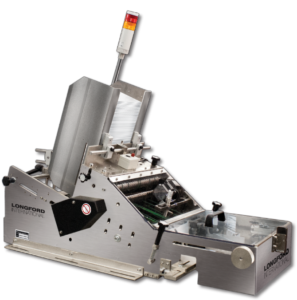At Packaging Systems, we offer a broad variety of feeders and automated dispensers for collating, batch counting and kitting solutions. Our goal is to provide you the right feeder for your specific application. Packaging Systems is built to support small businesses to large scale manufacturing companies, providing the best in customer service and technical support. Contact us today to see how we can help on your next automated batch counting project.
Feeders/Batch Counters/Collating Solutions
- Friction feeders fro a wide range of applications.
- Speeds up to 1000 pieces per minute on certain models and depending on product size.
- Easy to operate controls.
- Fully integration on turnkey systems.
- Electro-Mechanical double detect to protect against double feed.
- Extended life feed belts.
- Vacuum assist feeding.



